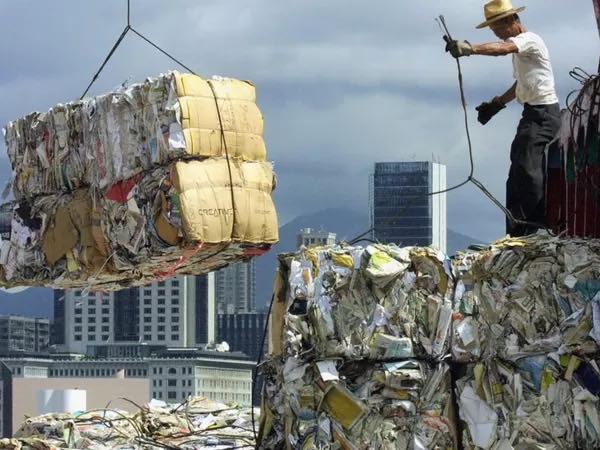In addressing the UN General Assembly in September 2022, Chinese President Xi Jinping announced that China would reach the peak of its carbon emissions by 2030 and achieve carbon neutrality by 2060. The promise of this sustainable “turn” will require a series of investments on the part of China and entail an expansion of the “green finance” sector.
With the CHINGREEN project, Marie Curie Fellow Giulia Dal Maso aims to study Chinese operations along the Belt and Road Initiative (BRI), exploring the increasing expansion of Chinese "green finance" and advancing the current understanding of the “financialisation of nature” in its global and spatial variety.
During the first two years of the project, the fellow will work at the Asia Research Institute (National University of Singapore), while during the third year she will work at the Department of Asian and North African Studies at Ca’ Foscari, supervised by professor Daniele Brombal.
What is the financialisation of nature?
Financialisation is a topic I’ve been working on for years. It is a process that refers to changes in the world of finance, but also to the spread of financial “logic” beyond the sphere of economics, in places such as society, our everyday lives, education, healthcare, and the environment.
Thanks to its power of abstraction, financial capital has directed, governed and de-politicised complex social and environmental issues. By doing so, it has deprived them of their political meaning and value, absorbing them in dynamics of market management that work with risk projection and future uncertainty. Plainly speaking, financialisation is a form of violence.
During the last few years, green finance has developed as the market’s response to climate change. How is the concept of green finance being applied in China?
It is a paradox: in facing a crisis that is caused by capitalism, we rely on the capitalist market to find social and environmental solutions. In response to climate change, the financial sector — which is strongly supported by public financial institutions such as central banks and governments — is producing a plethora of products such as carbon market, green bonds, and green securitisation. This means that financial mechanisms and tools are made to look — I repeat, made to look — “green” by virtue of their supposed aim to reduce CO2 emissions and preserve biodiversity by financing renewable infrastructure or forest protection. There are also products such as “catastrophe bonds”, which make profit by placing bets on when environmental disasters and natural catastrophes will happen in a particular place.
China has become a major figure in global green finance, having issued the greatest number of green bonds. However, there are currently no global standards, nor a common language to describe green finance, so we need to pay attention to its management and implementation. We need to question the green finance logic and examine the genealogy of China’s “green finance”.
To begin with, in China there’s never been a dichotomy between the market and the State, so the role of finance and of the financial set up in general (e.g. banks) has always been “guided” by the State. This is also true of the implementation of green finance.
We should also question the origin and meaning that concepts such as “environment”, “sustainability”, and “green” have in China, from a historical and cultural point of view. For example, the concept of “environment” in China entails a strong anthropocentric component. Moreover, until just a few months ago, Chinese taxonomy (unlike European taxonomy) included some hybrid and carbon-producing activities among its “green” investments, using terms such as “clean coal”.
In my project I will study the ways in which concepts such as “green finance” and “sustainable investment” in broad terms are translated in China, and how the Chinese government tries to export its own notion of green finance along the Silk Road.
China has taken a series of steps towards ecological transition in various territories along the Silk Road. Which areas will you focus on, and what method will you use?
I will first focus on Singapore, where I will conduct qualitative research interviews with members of the financial market to understand how China’s green finance products are created and issued, and how they circulate on a global scale to create value. Singapore is one of the main financial centres in the world and a place for financial intermediation between China and the rest of the world — this is particularly true now because of the current situation in Hong Kong,
The novelty of my research is that it combines abstract thought (such as the notion of value-creation in finance) with practical aspects. This involves assessing the material impact of the infrastructure that are financed by these products. It is unusual to study financial products with qualitative and ethnographic research, given that they are normally considered within the field of economics.
I will travel to South-East Asia and Central Asia — which are among the places with the highest rate of biodiversity along the Silk Road — to study infrastructure and financial products that have been capitalised as “green” and examine their impact on the social fabric and the local population. A key question will be whether infrastructure that is labelled as “green” from the financial world actually matches what is “green” and sustainable for local communities.
What effects can China’s “green promise” have on a global scale?
China is currently responsible for the greatest CO2 emissions in the world. If China manages to substantially reduce its carbon-intensive activities, it could play an important role in achieving the targets set forth in the Paris Agreement.
As for “green” investments along the Silk Road, we should monitor the ways in which green finance — i.e. the “green” bonds or loans of Chinese banks — will influence the possibile internationalisation of the renminbi. This is a hot topic, given the increasing talk of de-dollarisation. We should also observe how China decides to issue its loans, whether in renminbi or in dollars, and how it will ask to be paid back (assuming it asks). In fact, these “green” financial products are used as collaterals, so their use has nothing to do with their supposed “green” qualities.
This project has received funding from the European Union’s Horizon 2020 research and innovation
programme under the Marie Sklodowska-Curie grant agreement No 101024555











